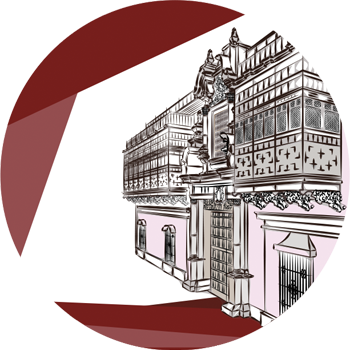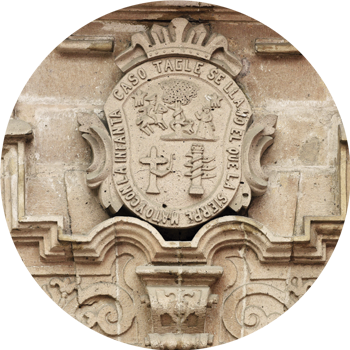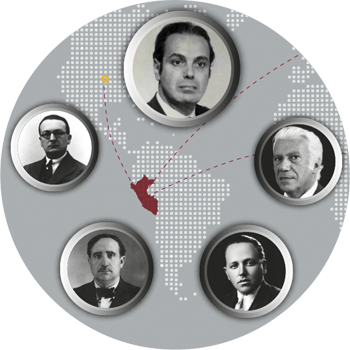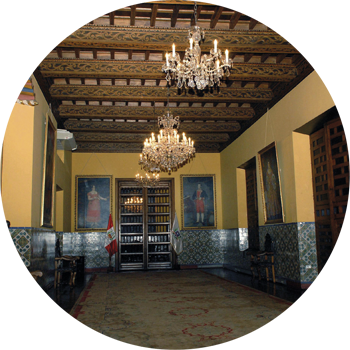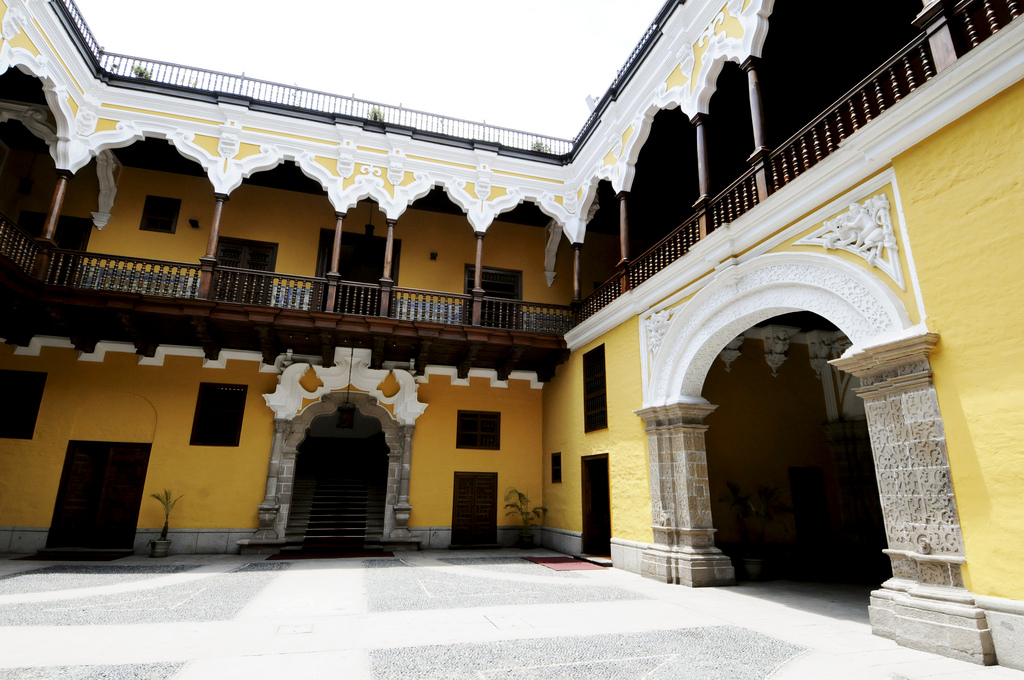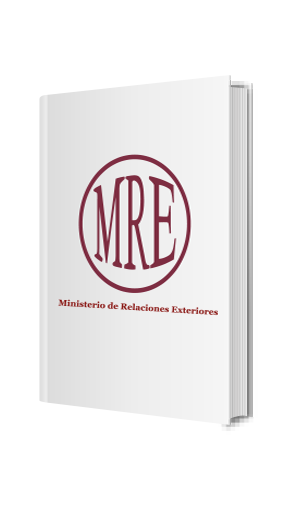Historical review
Just five days after the proclamation of Peru's independence, through a decree issued by General Don José de San Martín the Ministry of State and Foreign Affairs was created - then known as the Secretariat of State - and Juan García del Río– diplomat born in Cartagena - was appointed as Minister of State. Thus, the Foreign Affairs Ministry becomes the oldest institution of our country in its independent life.
After the proclamation of the independence of Peru by the Generalissimo Don José de San Martín, on 28th July, 1821, it was necessary for the transition between the colonial regime and the Republic to have adequate administration to consolidate the definitive freedom.
For this purpose, San Martin issued the Decree of 3rd August, 1821, creating the ministries of State and Foreign Affairs in charge of Don Juan Garcia del Rio; the one of War and Navy in charge of Lieutenant Colonel Don Bernardo Monteagudo; and the one of Treasury in charge of Doctor Don Hipólito Unanue. The ministries were then called Secretaries of State and the first internal organizational regime of each of them was dictated by San Martín the day after its creation.
Two years later, the Political Constitution promulgated on 12th November, 1823, provided in Article 82 that there would be three ministries: Government and Foreign Affairs; War and Navy; and Treasury.
Later, on 21st March, 1824, el Libertador (The Liberator) Simón Bolívar - considering the necessity of an Administrative Organization of the Republic while expanding the free territory as a result of the events of the war - issued in Trujillo a Decree by which he reduced the three previous Ministries to a single one, to be dispatched by the Minister or Secretary General of the Business of the Peruvian Republic (at that time, Colonel José Gabriel Pérez was appointed).
However, shortly afterwards, and by order of the Liberator, the Government Body repealed this decree by reestablishing the three ministries, leaving the portfolio of State and Foreign Affairs in charge of Dr. José Sánchez Carrión.
On 1st June, 1826, the Governing Council presided over by José de La Mar – due to a trip of Bolívar to the cities of Arequipa, Cuzco and Piura - decreed the creation of six State Secretariats: Foreign Affairs, Justice and Ecclesiastical Affairs, Interior, Treasury, War and Navy.
Likewise, by decree of 12th June, the six secretariats were distributed among four ministries: Relations and Interior, in charge of José María de Pando; Justice and Ecclesiastical Affairs, by Hipólito Unanue; Finance, in charge of José Larrea and Laredo; and War and Navy, reserved for the Liberator.
At the end of the same year, Bolivar drafted the Life Constitution, which was sworn on 9th December and established in its Chapter III the creation of four Secretariats of Office that would be under the orders of the Vice President, which were equivalent to the four ministries mentioned in the Decree of 12th June of that year.
This Constitution that appointed a Life President of Peru to Simón Bolívar lasted scarcely fifteen months (11th July, 1827), product of a revolutionary movement that motivated that the Congress appointed as President Mariscal La Mar in August of the same year and soon dictated – 18th March 1828 - a new Constitution, the same that was promulgated by the President himself and the then Minister of Government and Foreign Affairs, Francisco Javier Mariátegui.
According to this Constitution, on 15th October, 1829, an Act was promulgated, which established that there would be three ministries of State: one for Government and Foreign Affairs; another of War and Navy; and another one of Treasure. However, this Constitution was replaced by that of 10th June 1834, and the then Provisional President, General Luis José Orbegoso, through Decree of 7th January 1835, ordered that the office of the three ministries be refocused in a Secretariat General. Later, during the brief government of General Felipe Santiago Salaverry, by decree of 20th May, 1835, the country returned to the three ministries created by San Martin in 1821.
The Peru-Bolivian Confederation established, composed of the Nor-Peruvian, Sub-Peruvian and Republic of Bolivia states, Andrés de Santa Cruz ordered that these three ministries take charge of the confederation's affairs.
At the fall of the confederation took place what in history is known as the period of the "Military Anarchy", in which several generals disputed the Power. This stage was preceded by the Restoration period, which dictated the Constitution of 1839 and added a fourth ministry: that of Public Instruction, Beneficence and Ecclesiastical Affairs, whose functions were absorbed during the Military Anarchy by the Minister of Government and Foreign Affairs.
Likewise, during that period, a General Ministry was created once again, which was abolished in August 1844, with the restoration of only two ministries: Government and Foreign Affairs and Finance.
Since the establishment of the republican stage in Peru, there are many organic modifications that this Foreign Ministry went through: in April 1845, during the government of Ramón Castilla. - The creation of four ministries: Foreign Affairs; Government; War and Navy; and Treasury.
In June 1855, during the same government of Castilla. - It was organized as Ministry of Foreign Affairs and Public Instruction.
In November 1856, through the Law of Ministers. - The Constitution of 1856 established that the ministers would ordinarily be five: Foreign Affairs; Government, Worship and Public Works; Justice, Instruction and Beneficence; War and Navy; and Finance and Commerce.
In March 1857, during the leadership of Don Manuel Ortiz de Zevallos as Minister of Foreign Affairs. - The Foreign Affairs Ministry was organized internally in two Sections: Overseas and Continental.
In December 1865, during the government of Mariano Ignacio Prado.- By Decree, the Ministry was called the Secretariat of Foreign Affairs, in charge of the Under- Secretary Senior Official and was divided into two Sections: Diplomatic; and of Consulates, Chancellery and Accounting.
In January of 1866, during the same government of Prado is suppressed the Secretariat of Foreign Affairs.
In April 1878, during the second Government of Prado. - By Supreme Decree the Ministry of Foreign Affairs is reorganized. According to this provision, the most complete of its time, the ministry is divided into two sections: Diplomatic and Consulate, Chancellery and Accounting, replacing these denominations respectively, Overseas and Continental.
To the aforementioned modifications, there is a series of strategies that, from 1903 until 2010, were decreed with respect to the internal organization of the Ministry of Foreign Affairs.
